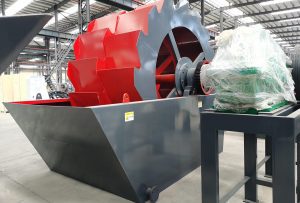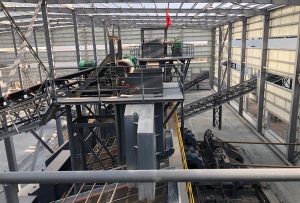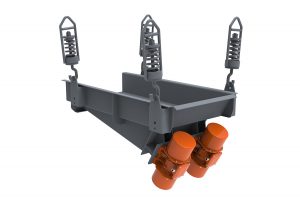E-mail: [email protected]
Minerai de fer écrasé
Maison » Pierre écrasée » Minerai de fer écrasé
Contenu principal
Regarder, Nous savons tous d'où vient l'acier dans ces gratte-ciel et les voitures - minerai de fer. Mais transporter cette roche brute directement de la fosse au haut fourneau? Oublie ça. C'est inutile. Leréel magie, leréel Déverrouillage de la valeur, se produit lorsque vous l'écrasez correctement.Minerai de fer écrasé n'est pas seulement des morceaux plus petits; C'est la fondation. Se tromper, Et vous combattez une bataille difficile - les écrans obstrués, moulins surchargés, mauvaise récupération, Et l'argent disparaissant littéralement dans votre barrage de résidus. J'ai passé des décennies dans les tranchées du traitement minéral, Et je peux te dire ceci: L'optimisation de votre circuit de concassage est le plus gros levier que vous avez pour augmenter la rentabilité. Coupez la théorie et parlons de noués en laiton d'obtenirminerai de fer écrasé Production composée.
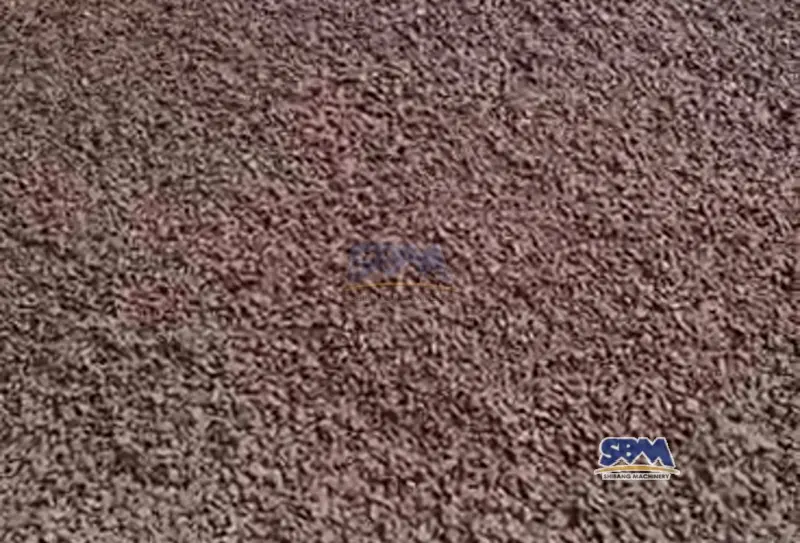
Ce qui est exactement le minerai de fer écrasé? (Et pourquoi la taille compte plus que vous ne le pensez)
Bien, Soyons clairs.Minerai de fer écrasé est votre hématite brute ou votre magnétite, Courez dans l'essoreuse - une mâchoire, un cône, Peut-être un impacteur - pour le casser de rochers de la taille d'une petite voiture en fragments gérables. Mais voici le botteur: “écrasé” n'est-ce pas une taille unique. Nourrissez-vous un haut fourne? Courir une plante à granulés hurlant pour une alimentation finement au sol? Ou peut-être se préparer à la séparation magnétique? Chaque processus en aval atrès exigences spécifiques à ce sujetminerai de fer écrasé distribution de taille. Visser le PSD (Distribution de la taille des particules), Et vous handrez instantanément la prochaine étape. Le but? Libérez ces précieux minéraux de fer (hématite, magnétite) de la gangue rock sans valeur aussi propre et efficace que possible. La libération commence par la fissure du broyeur.
Pourquoi le coup de départ est votre itinéraire le plus rapide vers les bénéfices perdus?
Pensez à un mauvais écrasement comme essayer de déverrouiller un coffre-fort avec une cuillère en plastique. Ça ne marche pas. Voici pourquoi investir la sueur et la technologie intelligente dans votreÉcrasement du minerai de fer pèse décuplé:
- La libération est roi: Si vos broyeurs ne font pas casser le rocher le long des frontières naturelles, Ces précieuses particules de fer restent serrées à l'intérieur de la roche des déchets. Aucune quantité de kit en aval de fantaisie ne les libérera efficacement. Bon écrasement = bonne libération = récupération plus élevée. Aussi simple que ça.
- La surface est votre ami (et ennemi): Les particules plus petites signifient beaucoup plus de surface exposée. C'est de l'or pour les réactions de frittage et de plomb, et absolument critique pour une fusion efficace. Mais écraser aussi bien trop tôt? Vous venez de créer un cauchemar de poussière et une énergie gaspillée. Trouver ce sweet spot est la clé.
- La cohérence est de l'argent en espèces: Nourrir des tailles incohérentes (gros morceaux + poudre) à Mills provoque le chaos et les problèmes de qualité. Le minerai uniforme écrasé assure une stable, opérations en aval rentables.
- Flux = aller: Jamais essayé de pelleter les ballons de basket? C'est du minerai grumeleux. Minerai de fer écrasé, taille à droite, coule comme un rêve à travers des chutes, trépas, et sur les convoyeurs. Moins de pontage, Moins de bouchage, Moins de malédiction de vos opérateurs, plus de disponibilité. Plus, Il est plus dense pour un transport moins cher.
- Effet domino en aval: Obtenez le bon écrasement, Et tout en aval devient plus facile et moins cher. Les moulins courent plus lisses, Les séparateurs fonctionnent mieux, Les écrans durent plus longtemps. Les goulots d'étranglement disparaissent. Grimpes de débit. Les taux de récupération sourient. C'est le cadeau qui continue de donner.
La chaîne d'écrasement: De la fosse au produit - clouant chaque lien
Produisant de haut niveauminerai de fer écrasé est une danse soigneusement chorégraphiée. Manquer un battement, Et le tout trébuche. Voici comment les pros le font:
1. Écrasement primaire: Où les gros chiens mangent
Image des camions de transport massifs qui déversent des blocs de la taille d'une maison. C'est là que vous apportez le marteau. Concasseurs à mâchoires ou massif broyeurs gyratoires vivre ici. Leur travail? Pur, force non fratérée. Écrasez ces monstres à quelque chose de gérable, dire 6 pour 10 pouces. La fiabilité n'est pas seulement gentille ici; c'est non négociable. Si votre primaire tombe en panne, La plante entière s'arrête. C'est pourquoi nous obsédons des versions et des conceptions robustes que vous pouvez réellement maintenir sans avoir besoin d'un doctorat en contorsionnisme. Vu trop “bon marché” Les primaires se transforment en puits d'argent. Ne sois pas ce gars.
2. Écrasement secondaire: Mise en forme & Dimensionnement
La sortie primaire est encore beaucoup trop grosse pour la plupart des concentrateurs. Entrez dans concasseur à cône. C'est là que la finesse commence (relativement parlant!). Cônes (en particulier les bêtes multicylindres hydrauliques modernes comme notre série HPT - vérifiez comment elles gèrent aussi des trucs difficiles comme River Pebble mill-sbm.com) sont les chevaux de travail. Ils prennent ce rock de la taille d'un poing et le resservent plus loin, typiquement 1 pour 3 pouces. Pourquoi les cônes gouvernent ici? Grande capacité, produire un cubique produit (Moins de merde feuillette qui cause des problèmes plus tard), Et leur automatisation continue de dimensionner serré et cohérent. Les concasseurs d'impact peuvent jouer si votre minerai est plus doux, Mais montrez des coûts de port comme un faucon.
3. Écrasement tertiaire / quaternaire: Le bel art de la réduction
Besoin de votre minerai de fer écrasé Très bien pour la tarding ou le meilleur broyage? C'est là que l'équipement spécialisé intervient. Crushers à cônes plus fins ou Rouleaux de broyage à haute pression (Hpgr) gérer ce travail. Les HPGR fonctionnent de manière unique - ils serrent la roche entre des rouleaux lourds sous une énorme pression, Création de minuscules fissures à l'intérieur du matériau. Cela réduit les particules à moins d'un demi-pouce (<0.5″) et peut améliorer considérablement l'efficacité de broyage ultérieure (Utiliser beaucoup moins de puissance!). C'est exact de rupture, nécessitant des commandes intelligentes et une configuration précise. Bien qu'il ne soit pas toujours nécessaire, Lorsque vous avez besoin d'un matériau ultra-fin, Les HPGR apportent une amélioration majeure.
4. Dépistage: Le héros méconnue (Ne l'ignorez pas!)
Vous ne pouvez pas contrôler ce que vous ne suivez pas. Le dépistage se produit tout au long d'une configuration écrasante. Les écrans vibrants sont les vérificateurs de qualité. Ils séparent strictement le minerai de fer écrasé dans “prêt à l'emploi,” “trop grand - renvoyer pour recruter!” (Système en boucle fermée - vital!), et “Trop bien - peut sauter.” Un bon dépistage est tout à fait important. Il empêche les concasseurs de recruter les rochers qu'ils ont déjà cassés (gaspiller un énorme pouvoir), boucliers ultérieurement, et garantit que vous atteignez cette cible de taille parfaite. Couper les coins sur les écrans ou l'entretien? Attendez-vous à des problèmes et à un matériau hors grade.
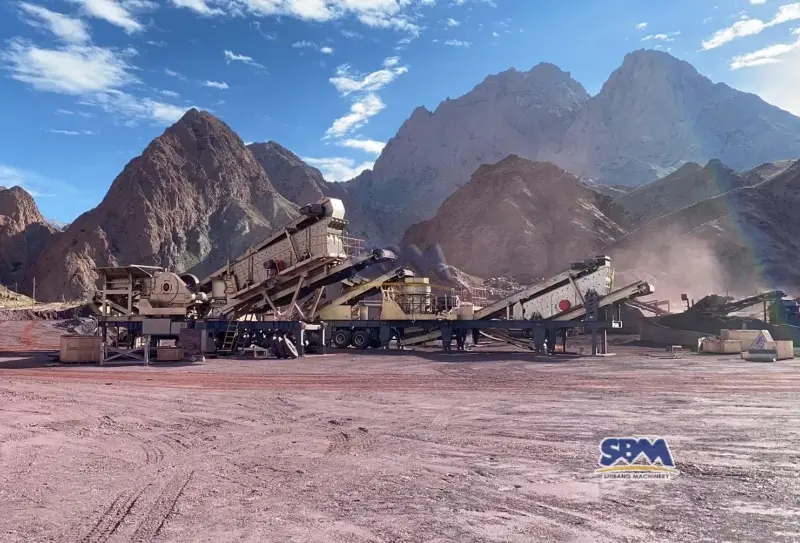
Choisir votre broyeur: C'est comme choisir un cheval de bataille - associez la bête à la tâche
Jeter tout vieux broyeur sur votreminerai de fer est une recette de catastrophe. Choisir sagement de la connaissance de votre ennemi (le minerai) Et vos objectifs:
- Personnalité de minerai: Est-ce plus difficile que le cœur d'un banquier? Abrasif comme du papier de verre? (Pense: Porter des coûts!). Difficile, Le minerai abrasif exige des réservoirs comme les giratoires ou les cônes construits pour la punition. Des trucs plus doux pourraient vous permettre de considérer les impacteurs, Mais vérifiez constamment les taux d'usure.
- Alimentation & Finition: Quelle taille de rochers jetez-vous? Quelle taille doit sortir? Cela dicte la scène (primaire, secondaire, tertiaire) Et le sweet spot du type de concasseur. Ne demandez pas à une souris de manger un éléphant.
- Tonnes: Le broyeur peut-il gérer l'appétit de votre plante? Sous-dimensionnement mène à des goulots d'étranglement; Oversize Wastes Capital and Energy.
- Facteur d'adhérence: Devenu humide, minerai argileux? Ce truc aime boucher. Vous avez besoin de concasseurs conçus avec de bons dégagements et peut-être même des astuces anti-collaboration intégrées. Rien ne tue le flux comme une prise collante.
- Compte de forme: Besoin de beaux, Cubes épais pour la tarding? Les cônes sont votre ami. Les impacteurs donnent une forme plus variable. Sachez ce que votre processus en aval aspire.
- Coût total de possession (TCO): Regardez au-delà du prix de l'autocollant! Facteur des factures d'électricité (grand!), Coûts d'usure de la doublure (Massive pour le minerai dur!), temps d'arrêt de l'entretien, et facilité de service. Un broyeur bon marché peut être la machine la plus chère de votre plante si elle mange des doublures ou se décompose constamment.
Parlons de broyeurs: Forces réelles & Quirks pour le minerai de fer
Oubliez les tables sèches, Chatchons des détails comme nous nous tenons près du circuit:
- Concasseur à mâchoires (Primaire): Simple, difficile, relativement bon marché. Aime les gros rochers. Inconvénient? Le produit peut être un peu dalton (pas super cubique), Les coûts d'usure sur le minerai dur peuvent mordre, Et ils ont besoin d'une grosse empreinte. Grand point d'entrée, fiable, Mais attention, la doublure change.
- Concasseur giratoire (Primaire): Le roi incontesté du tonnage brut pour des opérations massives. Gère d'énormes aliments, Robuste comme l'enfer. Mais… cher, complexe à maintenir, a besoin de fondations sérieuses, et les changements de doublure sont un événement. Vous achetez ceci pour une pure capacité au cours des décennies.
- Concasseur à cône (Secondaire / tertiaire – Par exemple, Hpt): Le MVP polyvalent pour la plupart des plantes. Excellente capacité, produit ce produit cubique souhaitable, économe en énergie Pour la réduction de la taille, il fait. Hydraulique moderne (comme le nôtre) Ajustement automatique pour l'usure et optimiser les performances. Gère bien le minerai dur / abrasif, Mais les coûts de la doublure sont toujours un facteur. C'est là que vous passez du temps à optimiser.
- Concasseur à percussion (Secondaire): Souvent moins cher, bon pour les minerais plus doux / moins abrasifs, peut produire un produit de spécification décent. MAIS… porter les coûts durs / abrasifs minerai de fer? Brutal. Les marteaux et les tabliers se mâchent rapidement. La forme des particules peut être moins prévisible. Procéder à la prudence et un gros budget de pièces d'usure si votre minerai est dur.
- Hpgr (Tertiaire / Quaternaire): Le nouveau(ish) Kid avec un potentiel sérieux. Imbattable Efficacité énergétique pour le concassage fin. Crée des particules micro-fissures qui facilitent le broyage en aval (Énorme économie d'énergie!). Grand contrôle de finesse des produits. Complexe pour exploiter / maintenir, Sensible aux fluctuations des aliments, et le coût du capital est élevé. Mais le opérationnel économies (pouvoir, Médias de broyage) peut être massif. Vaut une sérieuse considération pour les nouvelles plantes ou les mises à niveau nécessitant des aliments fins.
Contrôle de qualité: Pas seulement une boîte à cocher - c'est l'assurance des bénéfices
Produisant des montagnes deminerai de fer écrasé ne signifie rien si ce sont des ordures incohérentes. Voici ce que nous regardons comme des faucons:
- PSD est l'évangile: L'analyse de tamis n'est pas la paperasse; C'est votre bulletin de bénéfice. Le rapport bosse / fin est-il parfait pour le BF? Les amendes sont-elles trop grosses ou trop fines pour la plante à granulés? PSD cohérent = stable en aval = rendement maximum. Exécutez ces tests religieusement.
- Chimie (La tête de tête): L'écrasement ne change pas de chimie, Mais l'alimentation constante du concasseur aide à prédire ce qui frappe le concentrateur. Les chèques ponctuels attrapent la dilution de la déchet rock se faufilant - dilution que vous payez pour écraser et traiter pour un retour zéro!
- Humidité: Le flow tueur: Trop d'eau? Embrasser la manipulation lisse au revoir. Attendez-vous à des bouchons collants dans des goulottes et des bacs. Plus, Vous payez pour expédier de l'eau et brûler de l'énergie qui le sèche plus tard. Gérer.
- Tramp métal & Méchants: Bits de dent de pelle, foret en acier, ou boulons voyous? Ils détruisent l'équipement en aval (moulin à broyage particulièrement coûteux!). Détecteurs et aimants de métaux sur le convoyeur après L'écrasement est une assurance bon marché. Argile excessive? Cris pré-lavage pourraient être nécessaires.
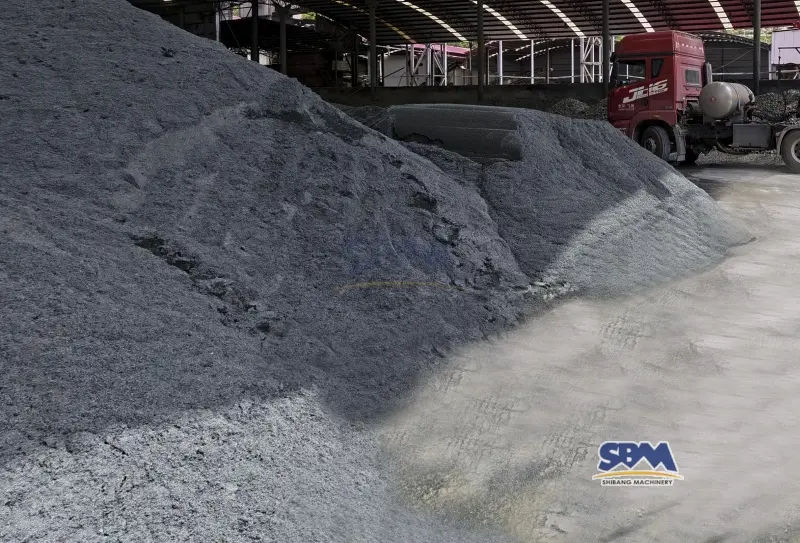
Au-delà de la saleté rouge: Pourquoi notre savoir-faire du minerai de fer craque aussi d'autres rochers
Bien sûr, Écrasement du minerai de fer est notre métier, Mais les idées de base? Ils travaillent partout. Prendre galet de rivière. Briser ce dur, lisse, Des trucs difficiles pour le sable de béton de qualité supérieure ou la pierre de construction? C'est un défi majeur, Tout comme écraser l'hématite dure. Les mêmes broyeurs exactement qui brillent dans nos configurations de minerai de fer - particulièrement forts, efficace cônes hydrauliques multi-cylindres (Oui, Comme notre série HPT - Voir-les gérer River Pebble spécifiquement sur Mill-sbm.com) - sont parfaits ici aussi. Le travail est le même: décomposer dur, Matériau difficile bien, Tout en gardant la forme correcte et en réduisant l'usure. Les méthodes que nous avons perfectionnées sur le minerai de fer fonctionnent exactement ici. Un bon écrasement est juste un bon écrasement. Période.
Hacks éprouvés sur le terrain: Presser chaque once d'efficacité de votre béguin
À partir des décennies de résolution des problèmes de terrain et d'équipement de raffinage, Voici des conseils opérationnels éprouvés:
- Le circuit fermé n'est pas négociable: Le recyclage du matériel surdimensionné à travers le concasseur est fondamental. Il maximise l'utilisation du concasseur (Ils détestent courir vide!), Empêche la sur-rafraîchissement des amendes, et vous donne réel Contrôler la taille du produit. L'écrasement en circuit ouvert est juste paresseux et inutile.
- Porter des pièces: Les gérer ou ils vous géreront: Revêtements de broyeur (manteaux, concaves, la mâchoire meurt) sont des consommables coûteux. N'attendez pas qu'ils tombent! Taux d'usure de la piste méticuleusement. Planifier les modifications de manière proactive Basé sur des données, pas de désastre. Utilisez des alliages premium assorti à l'abrasivité de votre minerai. Les temps d'arrêt pour les changements de doublure sont des revenus perdus purs - planifiez-le, l'optimiser, l'exécuter rapidement.
- Alimentation cohérente = performances de pointe: Maintenir un flux de matériaux stable dans les concasseurs. Trop peu d'aliments provoque des vibrations et une usure inégale. Trop de risques de confitures et de dégâts. Investissez dans des mangeoires de qualité - ils empêchent des problèmes opérationnels coûteux.
- Automation: Utilisez-le ou perdez-le: Broyeurs modernes (en particulier les cônes et HPGR) avoir des cerveaux. Utilisez leur automatisation! Laissez-le ajuster les paramètres pour la compensation d'usure, Surveiller le tirage de puissance (Un indicateur de santé clé), contrôler les taux d'alimentation, et protéger la machine. Ignorer cela laisse des performances et une protection gratuites sur la table.
- Le PM est moins cher que les pannes: Ce n'est pas de la science des fusées, Mais c'est incroyable à quel point il est ignoré. Rester religieusement aux horaires de lubrification. Vérifiez les tensions et les alignements de la courroie. Écoutez de nouvelles vibrations (Obtenir des capteurs!). Inspecter les composants. Quelques heures de PM prévu battent des jours de chaos imprévu à chaque fois.
- Suivre le jus: Crushing Gulps Power. Surveiller KWH par tonne écrasé. Si ce nombre commence à ramper, sonner l'alarme! Cela signifie généralement des doublures usées, Paramètres de concasseur incorrects, Problèmes de nourriture, ou problèmes mécaniques. C'est un système d'alerte précoce fantastique.
La ligne de fond: L'inefficacité écrasante est de l'argent dans le broyeur
Pauvre minerai de fer écrasé La production n'est pas seulement inefficace - elle détruit activement les bénéfices. Voici où les pertes se produisent:
- Goulots d'étranglement majeurs: Cause de dimensionnement incorrect, mangeoires bloqués, moulins surchargés, et les séparateurs ralentis. Drop de sortie de l'usine. Les revenus disparaissent.
- Power Bill Nightsmares: La mauvaise libération du mauvais écrasement oblige vos moulins à travailler chemin Plus fort (et plus longtemps) pour libérer les minéraux. Le broyage est le plus grand porc énergétique de la plante. Vous brûlez littéralement de l'argent parce que vos concasseurs n'ont pas assez bien fait leur travail.
- Pertes de rétablissement: Lorsque le fer reste piégé dans des déchets après avoir écrasé, Il est jeté comme des résidus. C'est une pure perte de profit. Meilleur écrasement = meilleure libération minérale = rendement plus élevé.
- Porter une partie avalanche: Mauvais concasseur pour le minerai? Le faire mal fonctionner? Attendez-vous à ce que les coûts de la doublure montent en flèche. Les échecs mécaniques deviennent fréquents. Les budgets de maintenance explosent. Les concasseurs bon marché ont souvent les coûts d'exploitation les plus élevés.
- Pénalités & Refuges: Livrer minerai de fer écrasé Cela ne répond pas aux spécifications de taille stricte de l'usine ou de la plante à granulés? Préparez-vous à des déductions de prix ou même à des charges rejetées. La réputation prend aussi un coup.
Investissement intelligent dans une technologie de concassage appropriée (durable, efficace, minéraire) avec une opération optimisée offre votre retour sur investissement le plus fort:
- ✓ Sortie plus élevée
- ✓ Faitures d'énergie inférieures
- ✓ Perte de métal réduite
- ✓ diminution des coûts de maintenance
Cet investissement rembourse rapidement.
Sécurité: Ce n'est pas facultatif - c'est comme ça que nous rentrons à la maison vivante
NE PAS MANCEZ LES MOTS: Les plantes écrasantes sont des endroits dangereux. Forces massives, parties en mouvement, poussière, bruit. La sécurité n'est pas une priorité; C'est la fondation. Période.
- Isolement énergétique (Cœur): Avant toute maintenance / compensation du concasseur: 1) Coupez toutes les sources d'alimentation (électrique / hydraulique / gravité), 2) Contrôles de verrouillage / étiquette, 3) Vérifiez zéro énergie. Ne sautez jamais des étapes - la complexité provoque des accidents.
- Gardien de machine: Fixez chaque partie rotative, ceinture, et pincement avec des gardes permanents. Ne jamais les retirer ou les contourner - les gardes empêchent de graves blessures.
- Contrôle de la poussière: Inhalé du minerai de fer dommage les poumons; La poussière aéroportée peut exploser. Protections obligatoires: pulvérisation, systèmes de ventilation, cagoule à poussière, et respirateurs des travailleurs.
- Bruit: Protégez votre audition: Ces machines rugissent. Désigner les zones de protection auditive. Appliquer le port de bouchons d'oreille ou de muffs. Les acouphènes sont pour toujours.
- Former, Former, Former: Chaque personne sur place a besoin d'une formation approfondie - pas seulement dans son travail, Mais sur les dangers à l'échelle du site, procédures sûres (Surtout pour nettoyer les blocages!), et une réponse d'urgence. La connaissance est une armure de sécurité.
- Procédures strictes: Documenter les guides étape par étape pour les tâches à haut risque (Modifications de la doublure / suppression de blocage). Suivez-les exactement - à chaque fois. La négligence provoque des accidents mortels.
Où nous nous dirigeons: Plus intelligent, Plus maigre, Écrasement plus méchant
L'avenirÉcrasement du minerai de fer a l'air excitant (et efficace!):
- IA & Équipement plus intelligent: Les broyeurs! En surveillant les vibrations, température, et utilisation de l'énergie, Ils prédisent les échecs (comme des roulements ou des doublures usés) avant provoquant des arrêts. L'IA sera automatiquement ajusté pour modifier la dureté du minerai. Cette technologie progresse rapidement.
- HPGRS gagne du terrain: Leurs économies d'énergie, surtout sur le chemin des meulles plus fines, sont trop gros pour ignorer. Attendez-vous à une adoption plus large, en particulier dans les nouveaux projets de Greenfield ou les améliorations majeures. L'argument TCO est fort.
- La science des matériaux gagne: Les doublures qui durent deux fois plus longtemps? Inscrivez-nous! R continu r&D en ultra-dure, Les alliages résistants à l'impact sont cruciaux. Moins de temps d'arrêt pour les changements, réduire les coûts d'exploitation.
- Recherche de récupération d'énergie: L'écrasement gaspille une énorme énergie comme chaleur / vibration. Pouvons-nous réutiliser certains? Les premiers concepts existent. Même les petites économies seraient précieuses.
- Cerveau à l'échelle de la plante: L'écrasement ne sera pas une île. Il sera étroitement intégré dans l'écosystème numérique de mine à port, nourrir les données et recevoir des optimisations de manière holistique. Ajustements en temps réel basés sur les caractéristiques du minerai de la fosse? Oui, s'il te plaît.
Écrasement - le héros méconnu de l'acier
Minerai de fer écrasé. Cela semble simple, droite? Brisez juste quelques rochers. Mais quiconque dirige une plante connaît la vraie histoire: C'est le point de départ absolument essentiel de l'ensemble du fer et de l'industrie sidérurgique. Obtenir la taille correcte, Libérer autant de fer que possible, Et garder les choses stables a besoin d'outils intelligents, course vigilante, Et une poussée constante pour faire mieux. De la puissance massive du premier concasseur à la rupture exacte du concasseur à cône et au tri minutieux par les écrans - chaque étape compte.
En tant que gens qui construisent les machines qui font ce travail difficile chaque jour, Nous l'obtenons aussi. Choisir le bon concasseur - celui qui est assez fort, Ne gaspille pas l'énergie, et continue de fonctionner de manière fiable - ce n'est pas seulement l'achat d'équipement. C'est une décision intelligente pour les revenus futurs de votre usine. Que ce soit l'hématite rouge pour le haut fourneau ou la magnétite noire pour les pastilles, Tout commence par un puissant, rupture efficace.
Continuons à travailler dur, Trouver de nouvelles façons, et partager ce que nous avons appris à faire minerai de fer écrasé Production plus intelligente, plus sûr, et plus rentable. Parce que faire mieux les choses aujourd'hui construit littéralement le monde de demain. Maintenant, Soyez droit avec moi - quel est le problème le plus difficile de votre configuration de concassage en ce moment? Toujours désireux d'entendre parler de vrais défis du terrain.

